#seo optimized url
Text
3 notes
·
View notes
Text
#seo#search engine optimization#seo tools#search console#backlinks#anchor text#HTML#digital marketing#URL#website#website maker#seo optimization#seo optimizer#content marketing#seo marketing#keyword
4 notes
·
View notes
Text
How URL Shorteners Can Help Your SEO Efforts
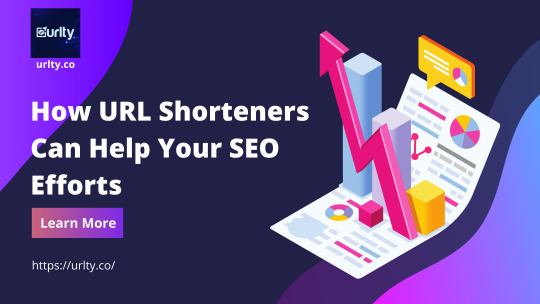
To increase organic traffic to your website and improve search engine rankings as an online business or website owner, you must improve your Search Engine Optimization (SEO) activities. Although there are many strategies to boost your SEO, one tactic that is sometimes disregarded is the use of URL shorteners. This blog post will discuss the benefits of using URL shorteners for SEO purposes as well as some best practices.
What are URL shorteners?
URL shorteners are tools that convert long and complex URLs into shorter and more manageable links. These shorter links can be used for sharing on social media, email marketing, or any other online platform. URL shorteners are typically used to save space and make links more aesthetically pleasing.
How URL Shorteners Help Your SEO Efforts
Better User Experience
URL shorteners can improve user experience on your website by making it easier for users to remember and share your links. Shorter links are also easier to read and more likely to be clicked on. This increased engagement can lead to more traffic and better search engine rankings.
Easier Sharing
With shorter links, it becomes easier to share links on social media platforms that have character limitations, like Twitter. A shorter link also looks more professional and less spammy, which increases the chances of people clicking on the link.
Improved Click-Through Rate (CTR)
URL shorteners can also help improve your click-through rate (CTR) in search engine results pages (SERPs). A shorter link is more eye-catching and easier to read, which can entice more clicks from users. This increased CTR can lead to better search engine rankings as search engines like Google consider CTR as a ranking factor.
Tracking and Analytics
Many URL shorteners come with tracking and analytics features that can help you track the number of clicks on your links. This information can be used to measure the success of your marketing campaigns and improve your overall SEO strategy.
youtube
Custom Branded Short URLs
Using a custom-branded short URL can also improve your SEO efforts. By using a branded short URL, you increase brand recognition and help with link attribution. This can lead to more traffic and better search engine rankings.
Best Practices for Using URL Shorteners
Use a reputable and reliable URL shortener. Some URL shorteners may be seen as spammy or harmful by search engines, which can negatively impact your SEO efforts.
Use a custom-branded short URL whenever possible. This not only looks more professional, but it also increases brand recognition and helps with link attribution.
Avoid using too many shortened links on your website. This can make your website look spammy and untrustworthy.
Always include a descriptive keyword in your URL. This helps search engines understand the content of your page and can improve your search engine rankings.
Example :
"https://www.amazon.com/Stealth-Multiplatform-Wireless-Noise-Cancelling-Xbox-X/dp/B0BX77C1LD/ref=sxin_16_sbv_search_btf?content-id=amzn1.sym.b000e0a0-9e93-480f-bf78-a83c8136dfcb%3Aamzn1.sym.b000e0a0-9e93-480f-bf78-a83c8136dfcb&cv_ct_cx=gaming+headsets&keywords=gaming+headsets&pd_rd_i=B0BX77C1LD&pd_rd_r=a9a3cb29-8ee0-4768-bd8d-eb8b5c60f294&pd_rd_w=S5Jxv&pd_rd_wg=2g8Mz&pf_rd_p=b000e0a0-9e93-480f-bf78-a83c8136dfcb&pf_rd_r=N0ZXSKASA5C2V185Q70B&qid=1683364941&sbo=RZvfv%2F%2FHxDF%2BO5021pAnSA%3D%3D&sr=1-1-5190daf0-67e3-427c-bea6-c72c1df98776"
this is a very large link and if you want to share with someone via social media, email it's not going to look nice but if you shorten this link using urlty.co you will get this : https://urlty.co/SdVq
2. "https://twitter.com/Cobratate/status/1615412288617385986?s=20" same with this link after shortening it : https://urlty.co/ajES
Finally, URL shorteners might be a useful tool for enhancing your SEO campaigns. URL shorteners can help you increase organic traffic to your website and raise your search engine rankings by enhancing user experience, raising click-through rates, offering tracking and analytics, and employing custom-branded short URLs. In order to prevent any detrimental effects on your SEO, just make sure to adhere to best practices and utilize a credible and trustworthy URL shortener.
3 notes
·
View notes
Text
Complete an SEO Audit on your Website.
During audit you should looking:
01. Check all pages have SEO meta titles and descriptions.
02. All pages on your website properly optimized for SEO keywords.
Remember that ,optimized appropriately without keyword stuffing.
Audit: In the SEO world, Auditing is a growth hacking technique that will help you attract and retain customers.
During audit you should looking:
01. Check all pages have SEO meta titles and descriptions.
02. All pages on your website properly optimized for SEO keywords.
Remember that ,optimized appropriately without keyword stuffing. Keyword stuffing means cramming the same keyword into your…

View On WordPress
2 notes
·
View notes
Text
Optimize Your Website Speed using 10 Best Practices & Tools
Website speed optimization is a very challenging task. Attaining the ideal website speed is every business’s desire. According to Google, a user expects that the web page should load within 3 seconds. To achieve the expectation, we as SEO professionals should make sure that a thorough analysis is performed to identify key action points; otherwise, chances are there that we might lose organic traffic and revenue.
Techniques mentioned in this article on how to optimize website speed will help you achieve desired page speed, but we need to take into consideration the turnaround time required for the website developer to implement the recommendations.
We must also analyze the reports generated by using website speed optimization tools and identify key impactful metrics affecting the website load time. Focusing on these impactful factors and trying to resolve them should be our priority.
According to the reports published by WPO Stats, by implementing the above-mentioned website speed optimization techniques if the site speed improves by even a second, then the efforts are worth it.
0 notes
Text
Unleash the Power of On-Page SEO to give Your Website to New Heights.
In today's fast-moving digital world, having a great website is more than just looking good or working well. There are so many websites out there, all trying to get noticed. That's where Search Engine Optimization (SEO) comes in, and one of the most important parts of SEO is on-page optimization. It's all about making sure your individual web pages are set up in the best way possible to attract attention from search engines.
On-page SEO means making your website pages better so they show up higher in search engine results and get more visitors. It's stuff you do on your own website, like using the right words and making your pages easy to read. Off-page stuff, like other websites linking to yours, is also important, but on-page SEO is something you can directly work on yourself to help your site do well in search engines.
Here’s a comprehensive guide to mastering on-page SEO and unlocking the full potential of your website:
Keyword Research: Your website will be better when you conduct keyword and phrase research related to your business brand. To find these, you can use tools like Google Keyword Planner, SEMrush, or Ahrefs, etc.That help your website to highly rank on Google first page.
Content Optimization: Good content is really important for SEO. Make sure your content is good quality, useful, and interesting for your readers. Use your main words naturally in your titles, headings, and throughout your writing.
Title Tags and Meta Descriptions: Create easy-to-remember titles and descriptions for your web pages to increase clicks and attract more visitors. These titles and descriptions also inform search engines about your business, helping you attract more customers. Keep them short, clear, and include important keywords.
URL Structure: A clean and easy-to-use URL structure makes it better for people using your site and helps search engines understand the content of your pages. Keep important words in your web addresses and avoid using long, confusing combinations of letters and numbers.
Headers and Subheadings: Proper use of headers (H1, H2, H3, etc.) helps to improves readability and helps search engines understand the structure and hierarchy of your content. Incorporate your target keywords naturally into your headers and subheadings.
Image Optimization: Using good images can make your website look better, but they also affect how well you show up in search engines. Optimize your images by using descriptive file names and alt text that includes relevant keywords to describe the images well.
Internal Linking: Linking to other pages within your website helps spread the importance of those pages and encourages visitors to check out more of your stuff. Put links to other pages that make sense in your writing to help people find their way around better and make your website more search engine friendly.
Mobile Optimization: Since most people use phones to go online, it's super important that your website works well on mobile. This means it should adjust to fit different screen sizes and load quickly. It's not just about making it easier for users, but also for search engines to find and rank your site.
Page Speed Optimization: Page speed is a important for ranking factor in search engine algorithms. Minimize loading times by optimizing images, leveraging browser caching, and reducing unnecessary scripts and plugins.
Schema Markup: Schema markup provides search engines with additional context about your content, helping improve visibility in search results. Implement schema markup where applicable to enhance rich snippets and increase click-through rates.
In conclusion, It's really important to do on-page SEO well to make sure your website is seen and works well online. By following the earlier tips and staying updated on new developments in SEO, you can make sure your website does well and gets lots of visitors from search engines. Just remember, SEO is something you always need to keep working on to stay ahead.
#google ranking#keywords research#on page SEO#SEO strategy#content optimization#digital marketing#URL structure optimization#SEO services#meta tag optimization#website traffic#online visibility
0 notes
Text
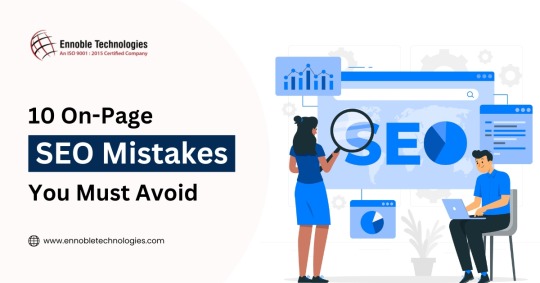
Avoid 10 on-page SEO mistakes for optimal website performance. Enhance your SEO strategy and improve search engine rankings. Explore our insights now!
Understanding Crucial On-Page SEO Mistakes
As digital landscapes evolve, mastering on-page SEO practices becomes pivotal. Amidst the quest for visibility and higher rankings, steering clear of certain blunders is paramount. Let’s delve into ten critical on-page SEO mistakes that can significantly impact your website’s performance and discover effective strategies to sidestep these pitfalls.
1. Neglecting Title Tags: The Gateway to Visibility
Title Tags: Your virtual welcome mat to users and search engines alike. Overlooking their significance undermines visibility. Ensure title tags encapsulate relevant keywords, succinctly describe content, and entice clicks.
2. Subpar Content Quality: The Foundation of Engagement
Content Quality: The cornerstone of user engagement and SEO success. Lackluster, uninformative, or duplicated content repels users and downgrades your site’s ranking potential. Focus on original, valuable, and keyword-rich content to captivate audiences and appease search algorithms.
3. Ignoring Meta Descriptions: A Missed Opportunity
Meta Descriptions: Often underestimated, these snippets play a vital role in attracting clicks. Crafting compelling, concise meta descriptions infused with keywords and a clear call-to-action can significantly enhance click-through rates.
4. Unoptimized URL Structures: Navigational Clarity Matters
URL Structures: An often overlooked but pivotal aspect of on-page SEO. Clean, descriptive, and keyword-rich URLs aid both search engines and users in understanding your content. Avoid lengthy, convoluted URLs that hinder navigation and comprehension.
5. Inadequate Internal Linking: Overlooking Pathways
Continue Reading : https://ennobletechnologies.com/seo/10-on-page-seo-mistakes-you-must-avoid/
#On-Page SEO Mistakes#Meta tags#Keyword stuffing#Slow page speed#Broken links#Poor URL structure#Missing alt attributes#Duplicate content#Ignoring mobile optimization#Incorrect header tags
1 note
·
View note
Text
Introduction
In our fast-paced world, time is a precious commodity. Whether you’re a student, professional, or entrepreneur, finding ways to streamline your daily tasks can significantly boost productivity. Enter ChatGPT, an AI language model that can assist you in automating various aspects of your work. In this article, we’ll explore nine ChatGPT prompts that can revolutionize the way you tackle your busy schedule.
1. Calendar Management
ChatGPT prompts: “Schedule a meeting for next Tuesday at 2 PM.”
ChatGPT can interact with your calendar application, whether it’s Google Calendar, Outlook, or any other platform. By providing clear instructions, you can effortlessly set up appointments, reminders, and events. Imagine the time saved when ChatGPT handles your scheduling!
2. Email Drafting
ChatGPT prompts: “Compose an email to my team about the upcoming project deadline.”
ChatGPT can draft professional emails, complete with subject lines, body text, and even attachments. Simply describe the purpose of the email, and let ChatGPT do the rest. It’s like having a virtual assistant dedicated to your inbox.
3. Code Generation
ChatGPT prompts: “Write a Python function that calculates Fibonacci numbers.”
Whether you’re a programmer or a student, ChatGPT can generate code snippets for various programming languages. From simple functions to complex algorithms, ChatGPT can save you hours of coding time.
4. Content Summarisation
ChatGPT prompts: “Summarise this 10-page research paper on climate change.”
Reading lengthy documents can be daunting. ChatGPT can analyse and condense large texts into concise summaries, allowing you to grasp essential information quickly.
5. Social Media Posts
ChatGPT prompts: “Create a tweet announcing our new product launch.”
Crafting engaging social media content is essential for businesses. ChatGPT can generate catchy posts for platforms like Twitter, LinkedIn, or Instagram, ensuring your message reaches your audience effectively.
6. Language Translation
ChatGPT prompts: “Translate this paragraph from English to Spanish.”
Whether you’re communicating with international clients or learning a new language, ChatGPT can provide accurate translations. Say goodbye to language barriers!
7. Data Analysis
ChatGPT prompts: “Analyse this sales dataset and identify trends.”
ChatGPT can process data, create visualisations, and extract insights. Whether it’s sales figures, customer behavior, or market trends, ChatGPT can help you make informed decisions.
8. Creative Writing
ChatGPT prompts: “Write a short story about time travel.”
Beyond practical tasks, ChatGPT can unleash creativity. From poems to fictional narratives, ChatGPT can be your muse when inspiration strikes.
9. Personalised Recommendations
ChatGPT prompts: “Suggest a book based on my interests in science fiction.”
ChatGPT can recommend books, movies, restaurants, or travel destinations tailored to your preferences. It’s like having a knowledgeable friend who knows your tastes.
Conclusion:
These nine ChatGPT prompts demonstrate its versatility. By integrating ChatGPT into your workflow, you can automate repetitive tasks, enhance communication, and free up valuable time. So, next time you’re swamped with work, turn to ChatGPT—it’s like having a digital assistant that works tirelessly to simplify your life.
In addition to ChatGPT, there are several other powerful AI tools designed to automate various tasks. Let’s explore some of them:
ACCELQ: A codeless AI-powered tool that seamlessly tests software across multiple channels (mobile, desktop, etc.). It offers continuous test automation and minimizes maintenance efforts1. You can find more information on their website.
Katalon: An AI tool for test automation that provides a complete solution for testing mobile applications and websites. It features a robust object repository, multi-language support, and efficient test results1. Check out Katalon’s website for details.
Selenium: An open-source AI tool for automating web and application testing. It’s commonly used for regression testing, functional testing, and performance testing1. You can explore more about Selenium on their official website.
Appium: Specifically designed for mobile app automation, Appium supports both Android and iOS platforms. It’s an excellent choice for mobile testing1.
Cypress: Known for its fast execution and real-time reloading, Cypress is an end-to-end testing framework for web applications. It provides a great developer experience1.
Parasoft: Offers comprehensive testing solutions, including static analysis, unit testing, and API testing. It’s widely used in the industry1.
Cucumber: A behavior-driven development (BDD) tool that allows collaboration between developers, testers, and non-technical stakeholders. It uses plain text specifications for test cases1.
TestNG: A testing framework inspired by JUnit and NUnit, TestNG supports parallel execution, data-driven testing, and test configuration flexibility1.
LambdaTest: A cloud-based cross-browser testing platform that allows you to test your web applications across various browsers and operating systems1.
Robot Framework: An open-source test automation framework that uses a keyword-driven approach. It’s highly extensible and supports both web and mobile testing1.
TestCraft: A codeless automation platform that integrates with popular tools like Selenium and Appium. It’s suitable for both manual and automated testing1.
Watir: A Ruby library for automating web browsers, Watir provides a simple and expressive syntax for testing web applications1.
Remember that each tool has its strengths and weaknesses, so choose the one that best fits your specific needs. Whether it’s testing, content creation, or workflow automation, these AI tools can significantly enhance your productivity and efficiency.
#generate-a-random-password#convert-a-pdf-to-a-text-file#create-a-qr-code-for-a-url#calculate-income-tax#convert-a-video-to-gif#extract-text-from-an-image#merge-multiple-pdf-files#generate-a-summary-of-a-long-text#find-duplicate-files-in-a-directory#ChatGPT prompts#Automate busy work#Blog writing workflow#Content creation#Keyword research#SEO optimization#Productivity hacks#Time-saving tools#Streamline workflow#9 ChatGPT Prompts to Automate Your Busy Work
0 notes
Text
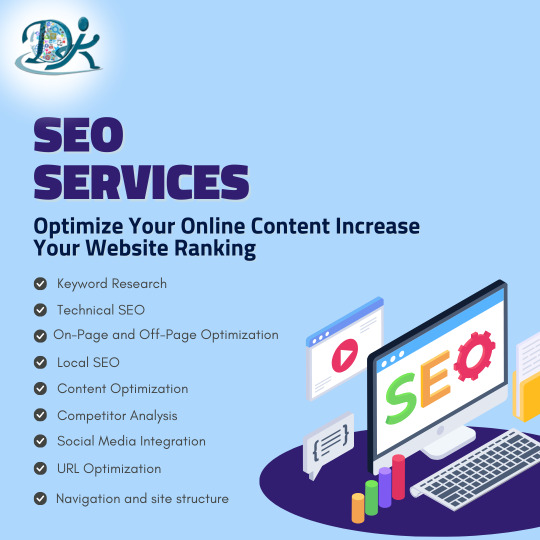
Boost website exposure and traffic with our all-inclusive SEO services. Careful keyword research, strategic on- and off-page optimization, advanced technical SEO, focused local SEO strategies and content optimization are some of the services we provide. With thorough analysis, learn more about your competitors and incorporate social media into your SEO plan with ease. Make sure that the navigation and URL structures are user-friendly. With our specialized SEO services, you may improve your online visibility and get higher search engine ranks.
#seo services#seo#on page seo#off page seo#keyword research#content optimization#ranking#url optimization
0 notes
Text
Boost Your Shopify Store's SEO with These Collection Page Tips
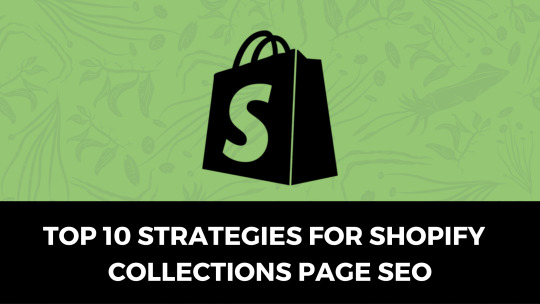
Are your Shopify collection pages fully optimized to attract search traffic? Properly optimized collections can help drive more organic visits and sales!
Here are some key strategies to make your collections more SEO-friendly:
Optimize page titles with relevant keywords - This helps search engines understand the topic of the page. Go beyond just the collection name.
Write strong meta descriptions that include keywords - These snippets can convince searchers to click through to your store.
Use descriptive URLs with target keywords - Customize Shopify's default URL structure to be more SEO-friendly.
Add image alt text with keywords - Optimize text and file names for better image SEO.
Link to collections internally - This facilitates indexing and improves site navigation for bots.
Highlight specific products - Draw attention by featuring popular, new or sale products.
Ensure fast page speeds - Quick load times are critical for user experience and mobile SEO.
Leverage SEO apps - Extensions like SEO Manager can enhance optimization.
Test collections on mobile - At least half of shopping searches are now mobile.
Focusing on both users and search engines is key for collection pages SEO. Follow these tips to help your Shopify store rank higher!
Let me know if you need any other Shopify SEO advice!
#shopify#shopify tips#shopify seo#ecommerce seo#collection pages#collections#seo optimization#page titles#meta descriptions#urls#alt text#internal linking#mobile optimization#seo apps#seo strategies#organic traffic#website traffic#online sales
0 notes
Text
How on page SEO work?
On-page SEO (Search Engine Optimization) involves optimizing various elements on a webpage to improve its visibility in search engine results and provide a better user experience. It focuses on both the content and the HTML source code of a page. Here's how on-page SEO works:
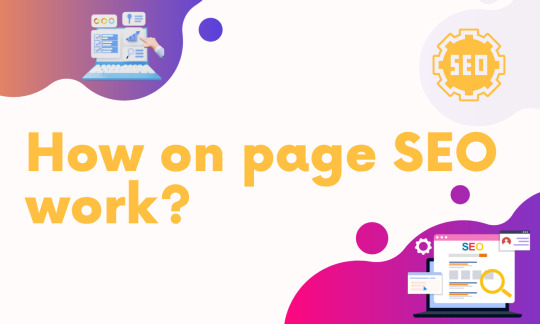
Keyword Research: Identify relevant keywords that users might use to find your content. Use tools to analyze search volume, competition, and user intent.
Page Title (Title Tag): Craft a unique and descriptive title for your page that includes your target keyword. The title appears in search results and browser tabs.
Meta Description: Write a concise and informative meta description that summarizes the page's content and encourages users to click through from search results.
Heading Tags (H1, H2, H3, etc.): Use heading tags to structure your content hierarchically. The H1 tag typically represents the main topic, while H2 and H3 tags organize subtopics.
Keyword Placement: Incorporate your target keyword naturally in the content, including the introduction, subheadings, and body. Avoid keyword stuffing.
Content Quality and Relevance: Create valuable, relevant, and engaging content that addresses the user's query and provides useful information.
Internal Linking: Include internal links to relevant pages within your website. This helps users navigate and improves website structure.
URL Structure: Create short, descriptive, and user-friendly URLs that include the target keyword. Avoid complex and lengthy URLs.
Image Optimization: Optimize images by using descriptive filenames and adding alt text that describes the image's content.
Mobile-Friendly Design: Ensure your webpage is responsive and functions well on mobile devices. Mobile-friendliness is important for user experience and SEO.
Page Loading Speed: Optimize your page's loading speed by compressing images, using browser caching, and optimizing code.
Schema Markup: Implement structured data (schema markup) to provide additional context to search engines, potentially leading to enhanced search results.
Engaging User Experience: Aim for a user-friendly design with clear navigation, readable fonts, and a clean layout.
SSL/HTTPS: Secure your website with an SSL certificate to ensure secure data transmission and gain a slight ranking boost.
Canonical Tags: Use canonical tags to indicate the preferred version of a page when there are duplicate or similar content issues.
Monitoring and Optimization: Regularly monitor your page's performance in search results, track user behavior, and make adjustments based on data and trends.
On-page SEO helps search engines understand the content and context of your webpage, making it more likely to rank higher for relevant search queries. By following best practices and continually improving your on-page elements, you can enhance your chances of attracting organic traffic and providing a positive user experience.
#seo#whitehatseo#Monitoring and Optimization Canonical Tags#Keyword Research:#on page seo#Schema Markup#Keyword Placement:#Page Title (Title Tag):#Meta Description#Content Quality and Relevance#Engaging User Experience#SSL/HTTPS#URL Structure#Image Optimization#Internal Linking#Page Loading Speed#Mobile-Friendly Design#tumblog#tumblr#article#my articles#search engine optimized (seo) articles#entrepreneur: latest articles#tumblr articles
1 note
·
View note
Text
How to Master On-Page Optimization for Website Success
Mastering On-Page Optimization: Strategies for Website Success
In today's digital landscape, having a strong online presence is vital for businesses of all sizes. One of the key elements of a successful online strategy is mastering on-page optimization. This practice involves fine-tuning various aspects of your website to ensure it ranks higher in search engine results and provides a seamless user experience. In this article, we'll delve into the strategies that can help you achieve on-page optimization mastery, allowing your website to thrive and succeed.
In the highly competitive online landscape, it's crucial for businesses to stand out and reach their target audience effectively. Mastering On-Page SEO is a fundamental step toward achieving this goal.
Understanding On-Page Optimization
On-page optimization involves making strategic adjustments directly on your website to enhance its visibility and relevance in search engine results. This includes both technical and content-related elements.
Conducting Comprehensive Keyword Research
Before creating content, thorough keyword research is essential. Identify relevant keywords and phrases that your target audience is likely to search for. This forms the foundation of your content strategy.
Crafting Engaging and SEO-Friendly Content
Creating high-quality, informative, and engaging content is at the core of Website optimization. The content should be valuable to readers and seamlessly incorporate the identified keywords.
Optimizing Title Tags and Meta Descriptions
Title tags and meta descriptions are the first things users see in search results. Craft compelling and concise title tags and meta descriptions that encourage clicks and accurately represent your content.

Utilizing Header Tags for Structure and SEO
Header tags not only enhance the visual structure of your content but also help search engines understand the hierarchy of information on your page. Use them strategically.
Enhancing User Experience with Internal Linking
Internal links guide users to related content within Meta tags your website, improving user experience and distributing page authority. Strategic internal linking can lead to longer on-site engagement.
The Importance of Image Optimization
Images play a crucial role in content engagement, but they can also slow down your website. Image optimization by compressing them and using descriptive alt text for accessibility and SEO benefits.
Mobile Responsiveness and Page Speed
With mobile devices being a primary source of internet access, ensuring your website is mobile-responsive is essential. Additionally, fast-loading pages improve user experience and search rankings.
URL Structure and Permalinks
A clean and organized URL structure makes it easier for users and search engines to understand your page's content. Use descriptive, concise, and relevant keywords in your permalinks.
Implementing Schema Markup for Rich Snippets
Schema markup provides additional context to search engines, enabling them to display rich snippets in search results. This can lead to higher click-through rates and improved visibility.
Creating XML Sitemaps for Crawling Efficiency
XML sitemaps help search engines navigate and index your website effectively. By submitting a sitemap, you ensure that all your important pages are crawled and ranked.
Monitoring and Analyzing Performance
Regularly monitor your website's performance using tools like Google Analytics. Track key metrics such as organic traffic, bounce rates, and conversion rates to identify areas for improvement.
Staying Updated with Algorithm Changes
Search engine algorithms evolve constantly. Stay informed about updates and changes to ensure your optimization strategies remain effective and aligned with the latest best practices.
Mastering on-page optimization requires a multifaceted approach that combines technical expertise,Content optimization, and continuous adaptation. By implementing these strategies, you can create a website that not only ranks well but also provides a seamless and valuable experience for your audience.
0 notes
Text
#seo#search engine optimization#seo tools#search console#backlinks#anchor text#HTML#digital marketing#URL#website#website maker#seo optimization#seo optimizer#content marketing#seo marketing#keyword
4 notes
·
View notes
Text
Improve SEO in Shopify Ecommerce Store Explained for Software Developers | Search Engine Optimization
Full Video Link - https://youtube.com/shorts/mNHnRE73JS4
Hi, a new #video on improving #seo #searchengineoptimization #sitemap #canonicaltag #robot #metatag #keywords in #shopify #ecommerce #website #online #store #pos for #merchandiser is publi
Shopify online stores have SEO built in and features to help you optimize your content. To optimize your online store for search engines, these are some recommendations.
1. Find keywords that are relevant to your products and your brand. What search terms can customers use to find your store.
2. Add the keywords into your content, including page titles, descriptions, and image alt text.
3.…
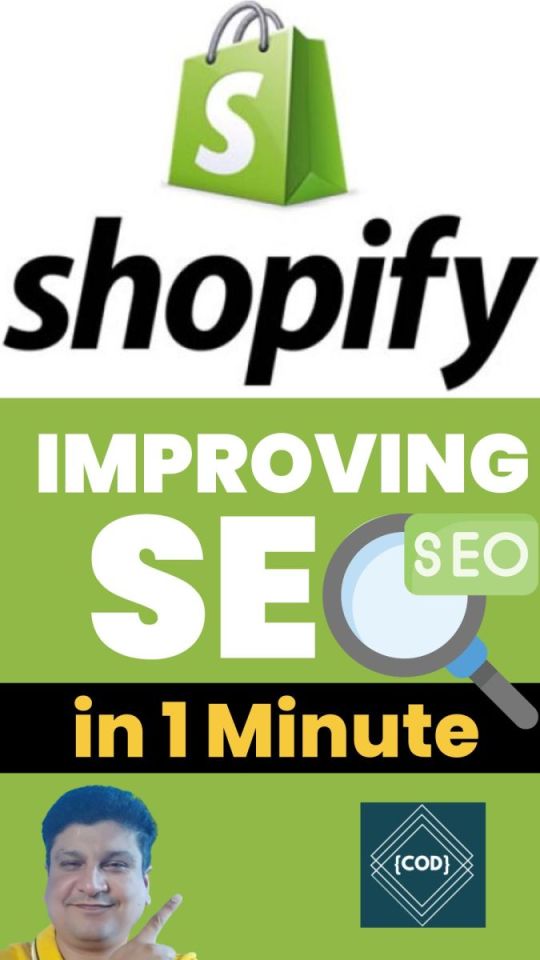
View On WordPress
#seo title shopify#set up shopify store#shopify improve seo#shopify search engine#shopify search engine listing#shopify search engine optimization#shopify seo#shopify seo expert#shopify seo full course#shopify seo guide#shopify seo guide for beginners#shopify seo keywords#shopify seo optimization#shopify seo optimization for beginners#shopify seo tips#shopify store#shopify store setup#shopify tutorial#shopify tutorial for beginners#shopify url seo
0 notes
Text
youtube
#On-Page SEO Service in Faridabad#Best SEO Services in Faridabad#SEO Companies in Faridabad#Faridabad SEO Agency#leading SEO services agency in Faridabad#Best SEO Services Agency Faridabad#Top Search Engine Optimization Services in Faridabad#Expert Search Engine Optimization Services in Faridabad#Keyword Research and Optimization#Content Optimization#Meta Tag Optimization#Image Optimization#URL Optimization#Internal Linking#Mobile Optimization#Page Speed Optimization#Schema Markup#Google Analytics and Search Console Setup#Youtube
0 notes